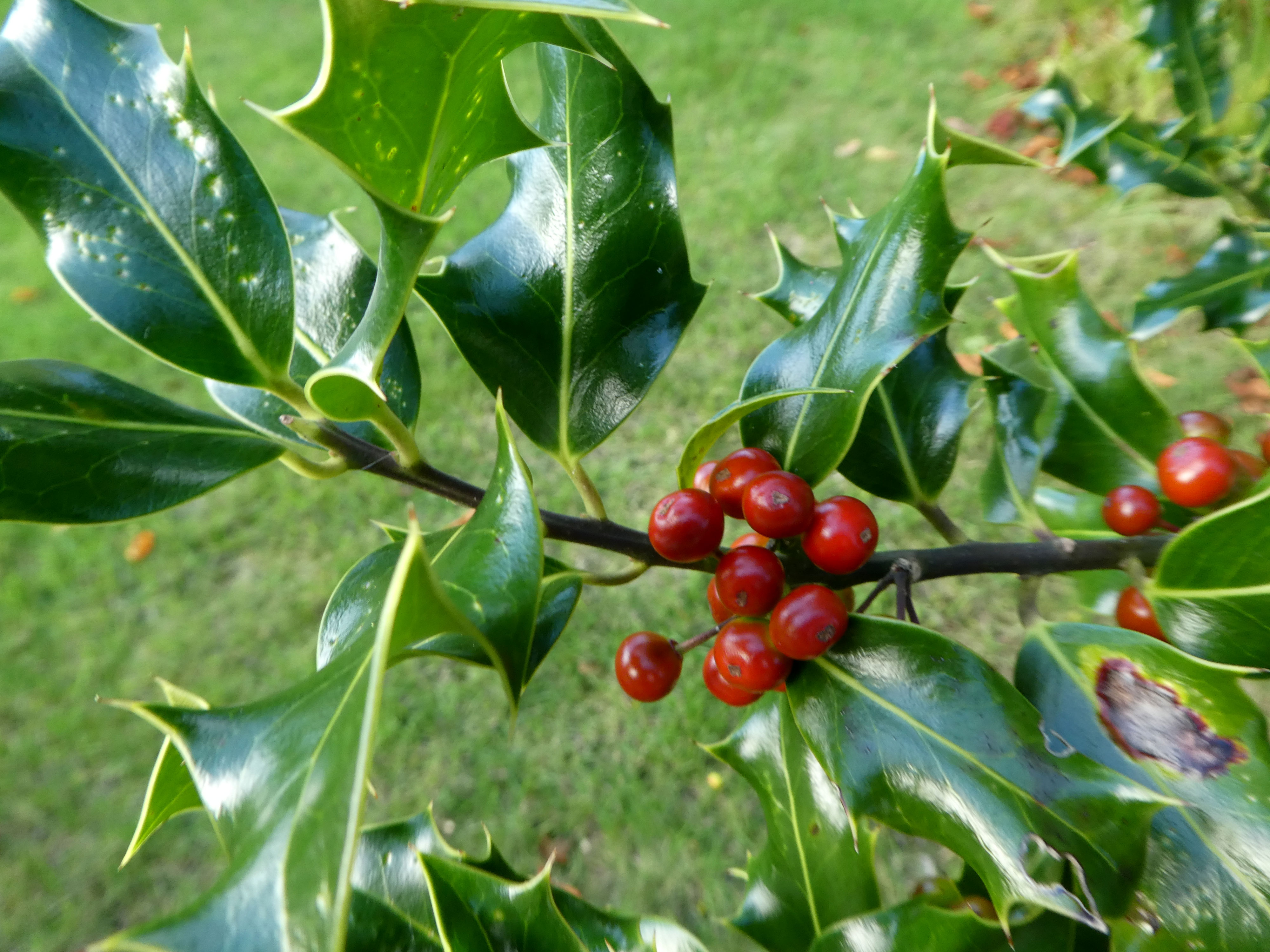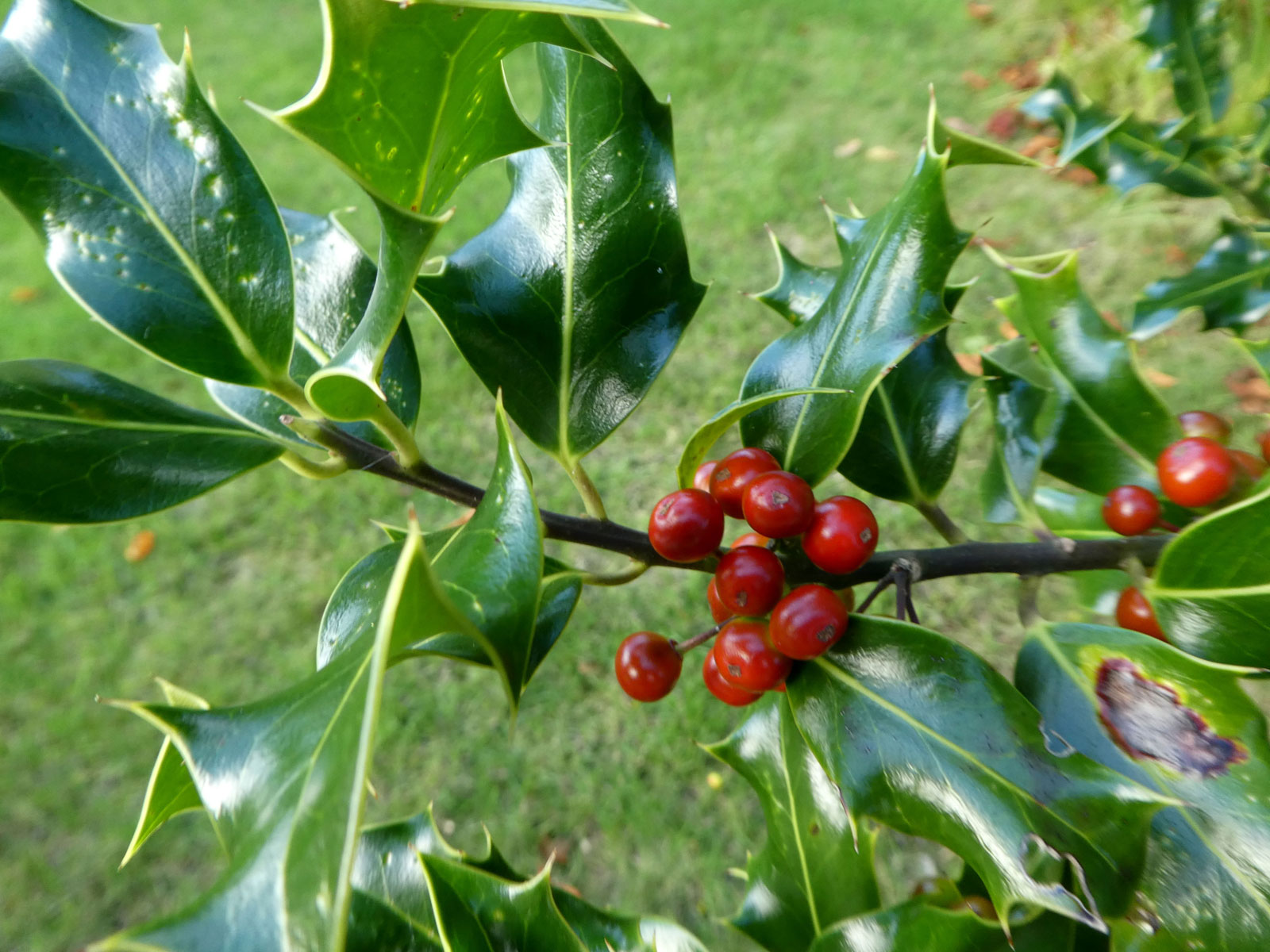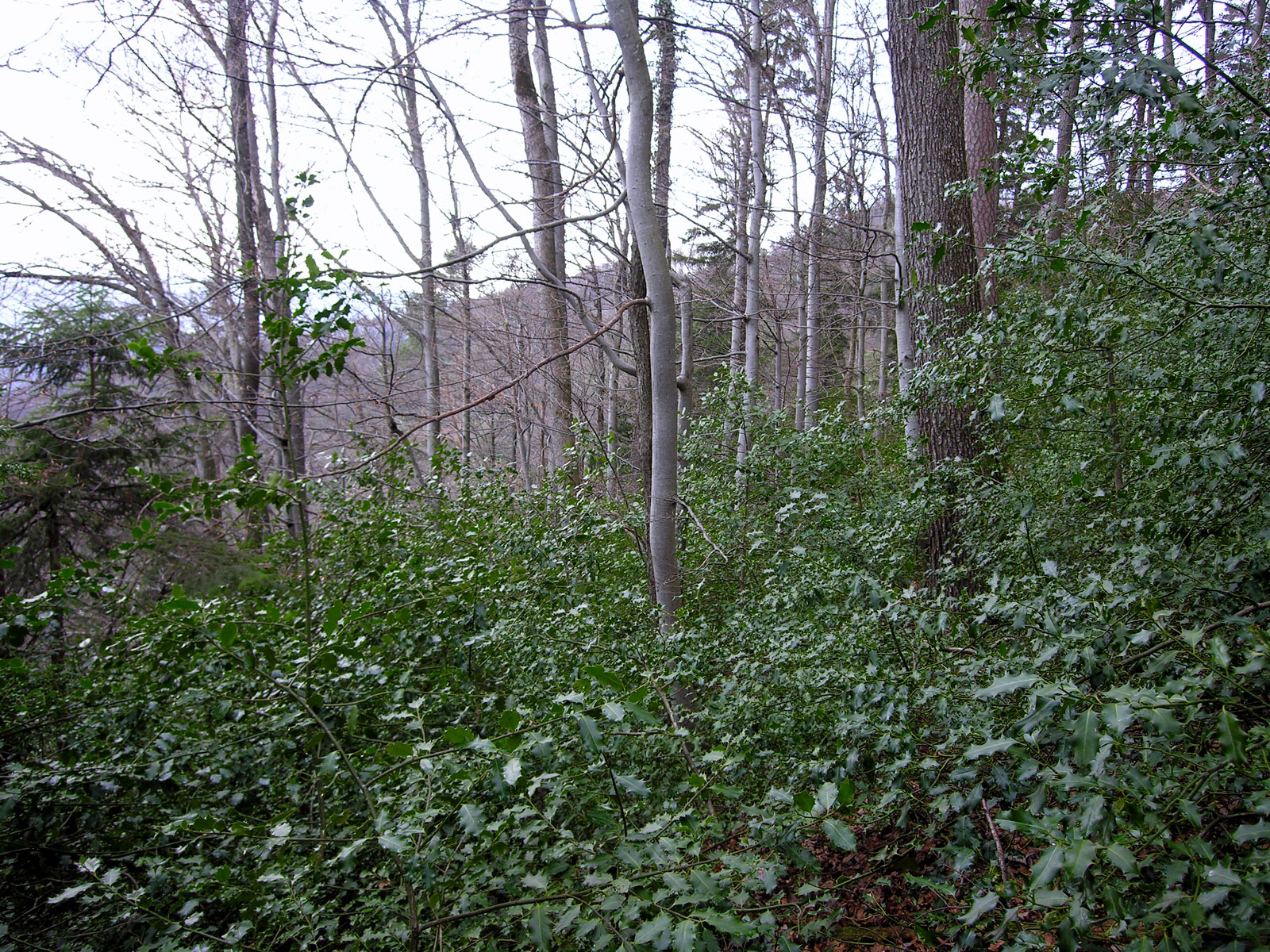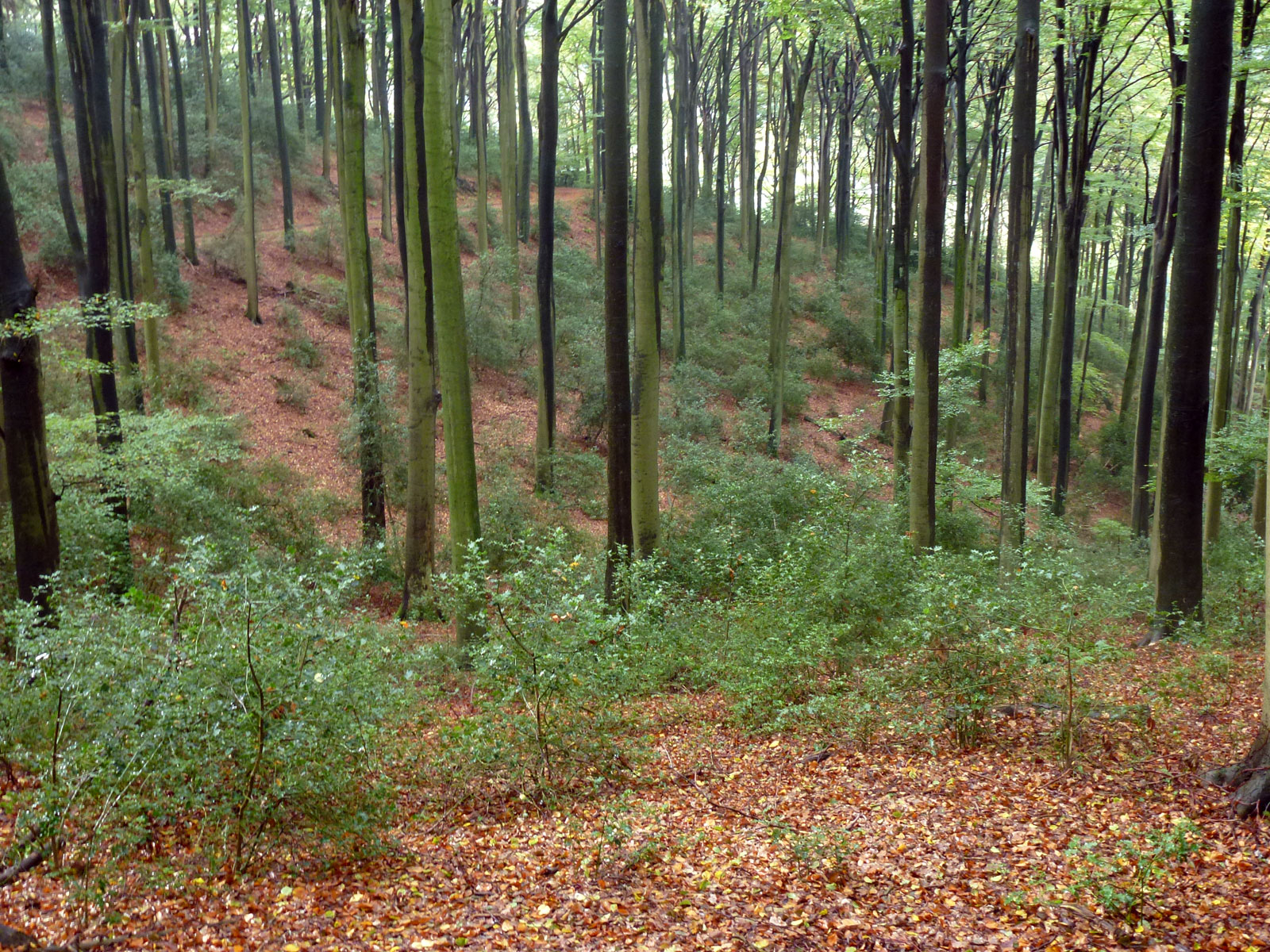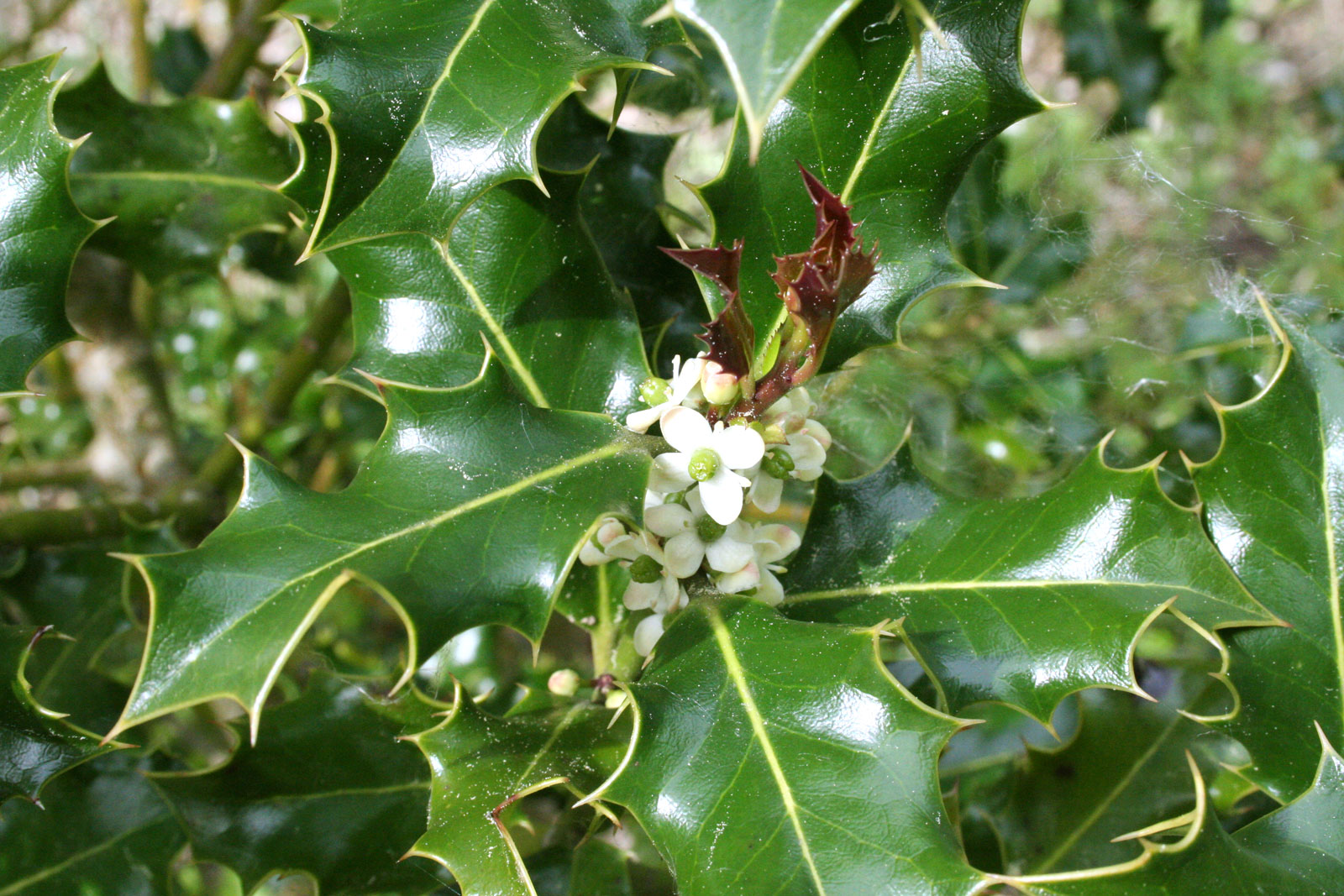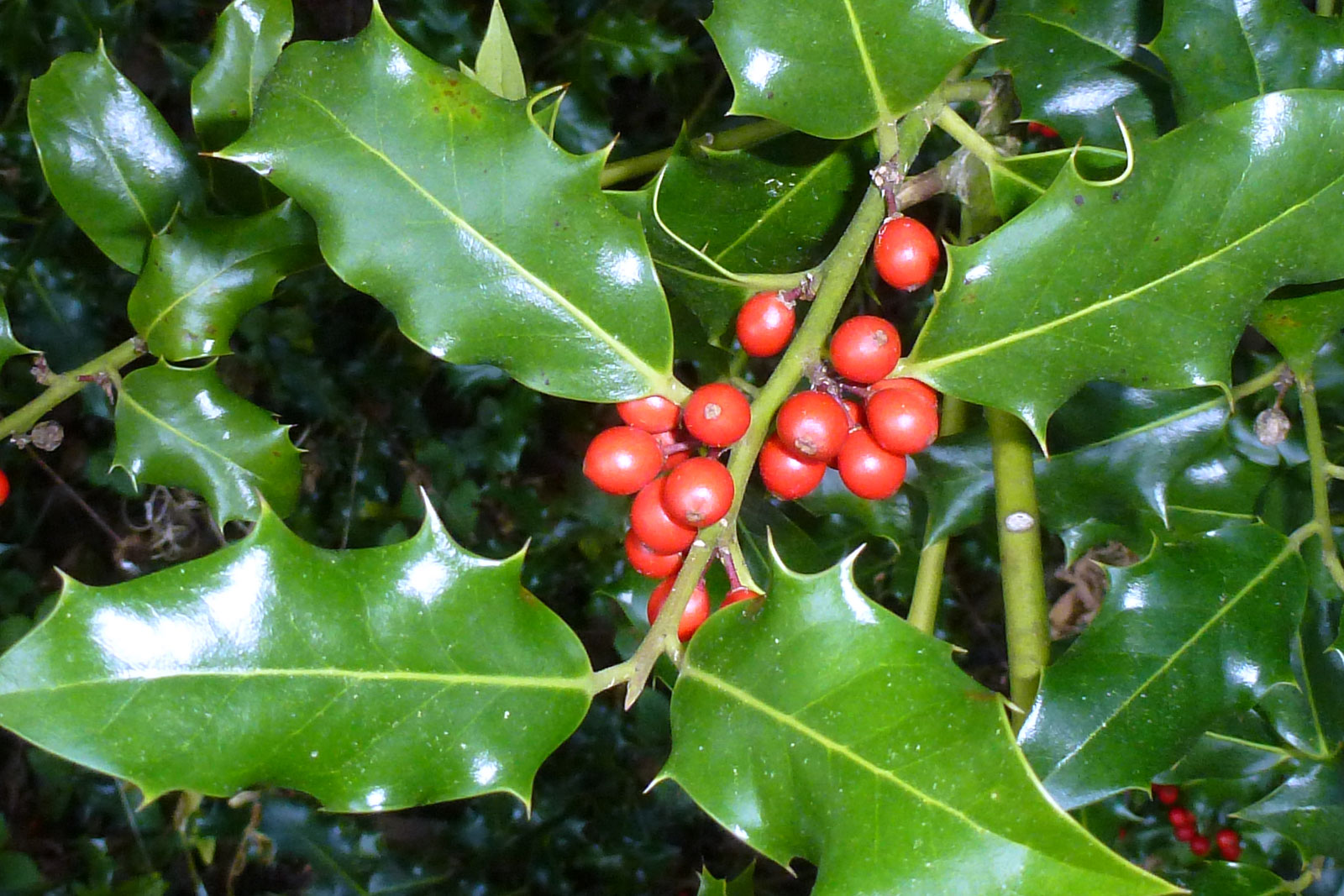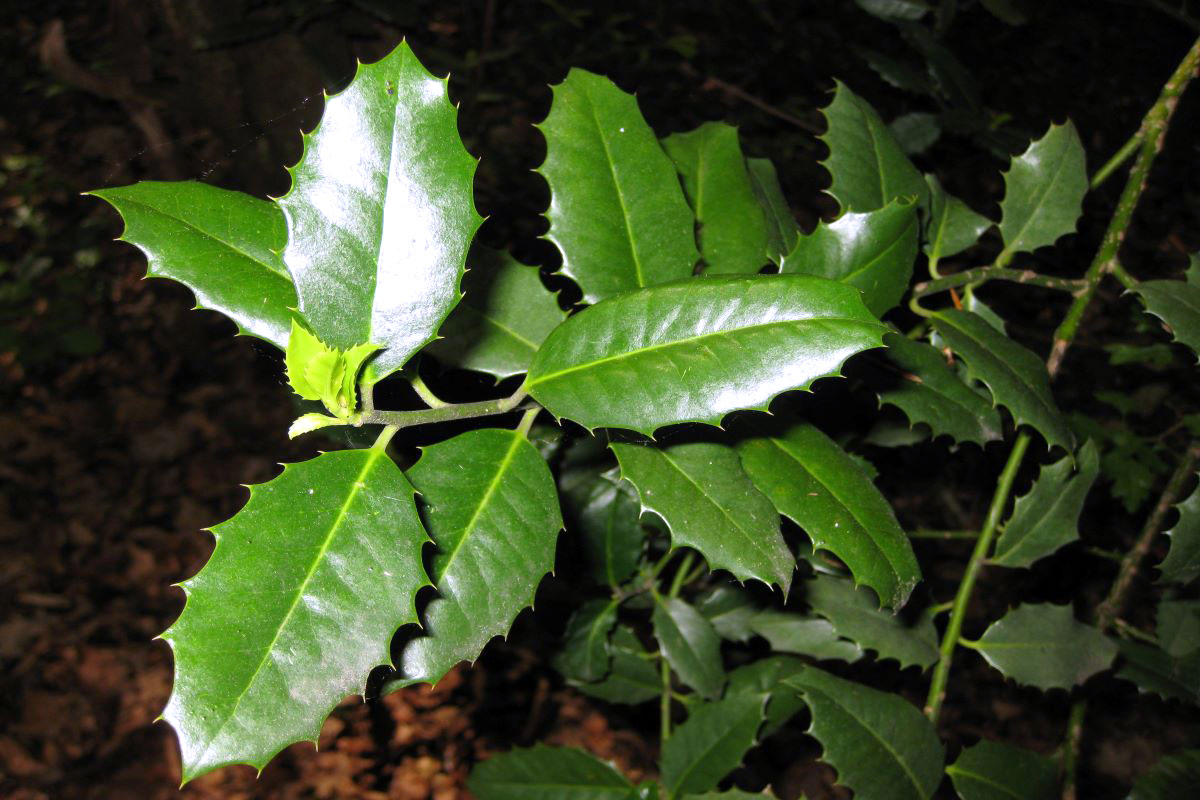When young, its growth is straight, upright, and it has a narrow, conical shape. Old trees can have a rounded crown. Ilex aquifolium can become up to 300 years old. In Germany, holly trees can grow up to 15 m in height and to a breast height diameter (BHD) of up to 60 cm. Most specimens only reach a height of 6 to 8 m however, and a BHD of a maximum 20 cm. The strongest specimen in Germany is thought to be a tree near Emmerich, on the lower Rhine, near the Dutch border. This tree is said to be 260 years old, is 12 metres high, and has a smooth, cylindrical trunk with a circumference of 2 metres.
Distribution
The distribution area of Ilex aquifolium comprises large areas of western and central Europe, almost the whole of southern Europe, and parts of north-west Africa. The eastern border of its range runs through Germany. Its occurrence is limited in southern Scandinavia because of the low winter temperatures (extreme frost), and in southern Europe by summer drought.
In Germany, it is found in areas with atlantic and sub-atlantic climates. It occurs in the north of the state of Mecklenburg-Vorpommern and across the whole of the northern German lowlands, as far as the Lower Rhine. In the west it is to be found from Lower Saxony to the Black Forest. In Bavaria there are smaller patches especially in the south, in a narrow strip of land on the northern edge of the Alps.
Water and soil
The holly is not very demanding in terms of its site requirements. It likes fresh, moderately dry, moist but well aerated, not too acidic soils with an average supply of nutrients. It is found on open mountain pastures at up to 1:000 m above sea level and in the lowlands in the partial shade of beech/fir forests or sparse deciduous forests. It does not have special requirements in terms of water supply. However, nor does it tolerate severe drought and heat.
Optimum growth conditions for the holly are available in the Atlantic regions of northwestern Europe, with their mild winters and relatively high levels of precipitation in summer.
Cultivation risk in times of climate change
Although holly does not like climatic extremes very much – summer drought and winter cold limit its spread – it is considered to be quite hardy, as long as the local risk of early or late frost is not too high and the soil does not dry out too much. Not least because of the increasingly mild winters, it will also be able to find a niche to suit it in many places in times of climate change. In recent years holly has been seen to be spreading eastwards beyond its range limit in Mecklenburg-Vorpommern. This is attributed to climate change and the milder winters.
Botanists talk about the so-called “laurophyllisation” of central European forests as a consequence of climate change. Here in our region, it is particularly evergreen woody plants such as ivy, misteltoe or holly that are benefiting from climate change and have spread significantly in recent years. In the forests on the southern side of the Alps, it is especially evergreens such as the camphor tree (Cinnamomum camphora), the windmill palm (Trychycarpus fortunei), the southern magnolia (Magnolia grandiflora) and the cherry laurel (Prunus laurocerasus) that benefit. These are often escapees from large gardens or parks, which then grow wild in the forests. It is thus possible that forests similar to the laurel forests of the Tertiary era will form again, with a new species composition of deciduous and wintergreen deciduous tree species.
Silviculture and growth performance
The holly is extremely rare, and aesthetically it is an attractive element of our forests. It should thus not only be protected during forest operations, but specifically promoted.
Although it is extremely shade-tolerant, it needs at least light semi-shade or lighter conditions to reach the growth height of 10-15 m possible in central Europe. The tree’s vitality and ability to regenerate are also promoted by better light conditions. Shade-providing trees around the holly should be removed cautiously and over the course of several years, but consistently nonetheless.
On the other hand, the holly should be spared the extremes of the climate on open areas, and if possible, a few old or pioneer trees should be left in its immediate vicinity to protect it from frost.
Forest conservation
As holly is not very common, the insects that occur on holly are of no real importance at the moment in terms of forest conservation. Only three species specifically dependent on Ilex aquifolium are known:
The holly leaf miner (Phytomyza ilicis) and the holly leaf aphid (Aphis ilicis) are unpopular with gardeners. The Asian holly moth Plesiomorpha flaviceps has been recorded in Germany several times, but is not as yet established here. The caterpillars of this species eat the fresh, still soft leaves of the holly. This butterfly species is really a subtropical species, but if it does become established here, it could then also infest our native holly trees.
The holly has various shapes of leaf, presumably to protect it from browsing. In the lower limbs of the shrub, the leaves are wavy and very prickly. Further up the tree, out of the reach of hoofed game browsers, there are fewer and fewer spines on the leaves, until they are eventually completely flat and lacking in spines. Different leaf shapes on the same specimen is a phenomenon known in botany as “heterophylly”.
Biological diversity
The common holly is so rare in Bavaria that it is classified as “endangered” on Bavaria’s Red List of Threatened Species and as one of the “especially protected species” under Article 44, Paragraph 1, No. 4 of Bavaria’s nature conservation law (§ 44 Abs. 1 Nr. 4 BNatSchG ).
It is evidently relatively “unpopular” with insects, as there are very few species that occur on Ilex. The best-known species is the holly leaf miner (Phytomyza ilicis), whose larvae feed monophagously (exclusively) on the leaves of the common holly. The flies appear from the end of May to the end of June. They lay their eggs singly on the underside of the leaves, at the base of the midrib or at the leaf stem on fresh holly leaves. When the larva hatches, it tunnels its way along the midrib towards the leaf tip. After the first moult (shedding of skin), the larva leaves the midrib to feed on the palisade parenchyma, creating a so-called “leaf mine”. After the second moult (Jan-March), a typical yellow mine appears on the leaf. The larvae then pupates in March/April.
The berries of the common holly are eaten by relatively few bird species. In England it is mainly the blackbird (Turdus merula), the redwing (Turdus iliacus), and the mistle thrush (Turdus viscivorus) that eat the berries of the common holly. In central Europe, just 12 bird species are known to eat the berries of the common holly. By comparison, 63 bird species feed on the fruits of the rowan.
Wood
The wood of the holly is yellowish green, hard, and fine-grained. It is therefore difficult to split. Its raw density in air-dry condition is 0.79 g/cm³. Holly wood is easy to work and process. It can easily be sawn, milled, planed and drilled. Its surface is fine-pored and smooth and it takes polish well. Holly is mainly used for wood turning and veneer.
Cultural and historical significance
In northern Germany, the common holly is also known as “Hülse” or “Holst”. This is related to the English name “holly”. In Bavaria there are also various names which translate as “stabbing thorn”, “stabbing green” or “forest thistle”. In dialect they are also referred to as “wax”, “Stech” (from “stabbing”) or “Raßloaba” (from “leaf/litter”).
The German name “Stechpalme” means “stabbing palm”. Like the holly, the palm is evergreen. In earlier times, churches were decorated with holly on Palm Sunday. Holly branches were also cut to decorate the graves on All Souls Day and at Christmas. In the UK and North America, holly is an important part of Christmas decorations.
The old 20 Deutschmark note depicted the famous poet Annette von Droste-Hülshoff (another German word for holly - see above). It showed a large beech in reference to her novella “The Jews’ Beech”, and a holly branch in reference to her name.
Other Ilex species
The holly moth has already been imported into Germany several times with the Japanese holly (Ilex crenata), which is similar in appearance and growth to the boxwood (Buxus sempervirens).
The leaves of the south American mate shrub (Ilex paraguariensis) are used to make the Maté tea very popular in the southern half of South America.
